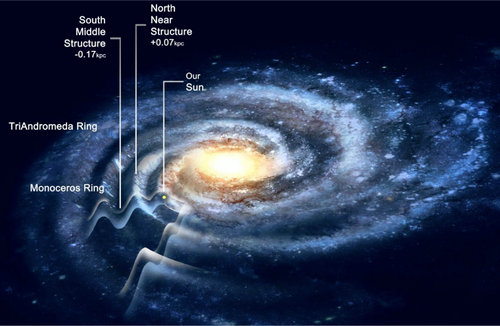
In recent years, astronomers have discovered that our Galaxy is perturbed in the process of merging a dwarf galaxy, which imprints the oscillation features in the Galactic disk. However, at present, astronomers can only roughly estimate by numerical simulation that the perturbation took place between 300 million and 900 million years ago.
Recently, TIAN Haijun and his collaborators from the National Astronomical Observatories of the Chinese Academy of Sciences (NAOC) clearly depicted the spiral structures of radial (VR) and azimuthal (VΦ) velocities in the phase space of vertical position and velocity (Z-VZ) with LAMOST-Gaia combined stars.
They also investigated the variation of the spiral pattern in different stellar ages, and found that the perturbation to the Galaxy probably occurred in the last 500 million years. This strongly constrains the merging time of dwarf galaxies. The results were published online in The Astrophysical Journal Letters.
This work combines LAMOST and Gaia data, and obtains accurate age for each star, to build a precise stellar kinematical sample. The researchers divided the sample into groups with different stellar ages and charted the distribution of stars of different ages in the vertical phase space, as shown in Figure 2. Except for the old stars older 6 billion years, other young stars, especially younger than 500 million years, all appear significant spiral structures.
This is a phase mixing phenomenon caused by the perturbation of a dwarf galaxy. This indicates that the perturbation to our Galaxy probably took place no later than the 500 million years. The time constraint for the perturbation occurrence is much better than others.
This study provides some important observational evidences to understand the disk perturbation mechanisms and the formation and evolution history of the Galaxy.

Figure 1. The artistic Galaxy under perturbations. (Image by Rensselaer Polytechnic Institute)

Figure 2. Spiral-shaped structures in the phase space of the vertical position and velocity (Z-VZ) for the LAMOST/Gaia stars. (Image by NAOC)

86-10-68597521 (day)
86-10-68597289 (night)

52 Sanlihe Rd., Xicheng District,
Beijing, China (100864)

